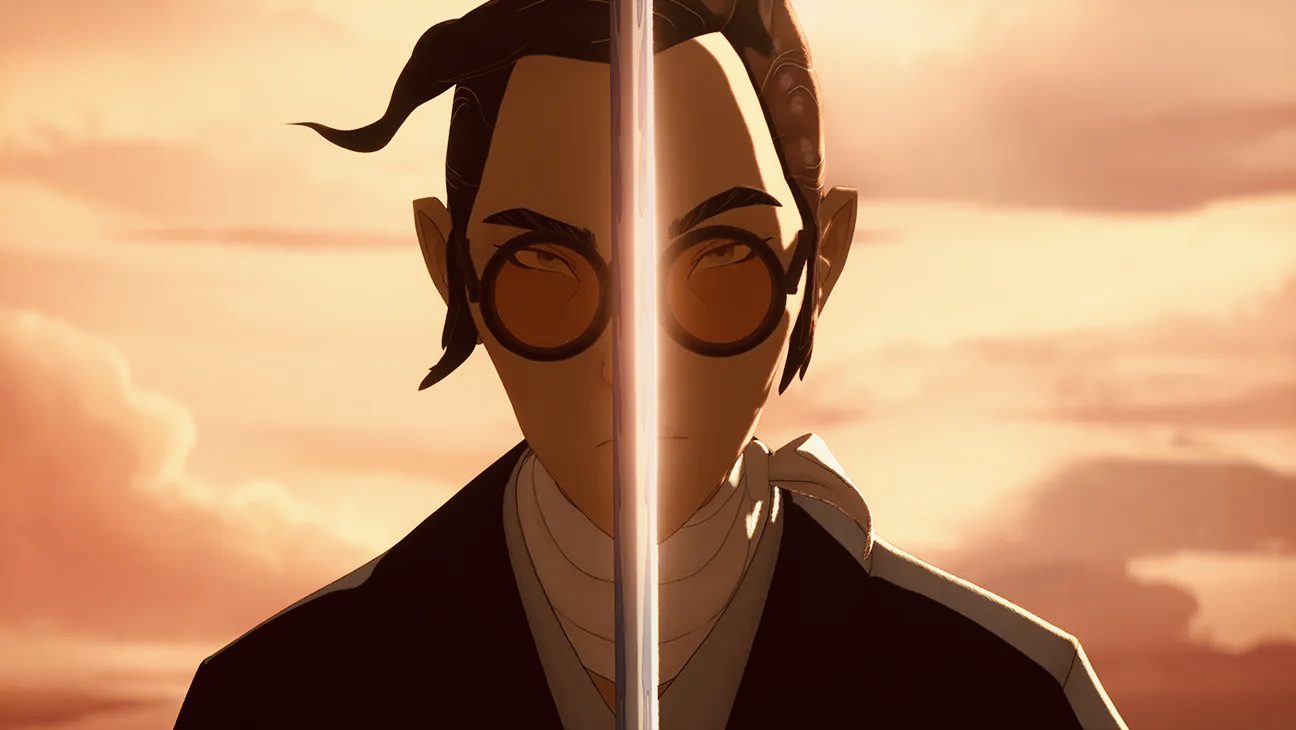“Why do I want a child who looks more white?” This was the question Amber Noizumi, creator of Netflix’s Blue Eye Samurai, asked herself after she’d gleefully texted her white husband and co-creator, Michael Green, about their newborn daughter’s “strikingly blue eyes.” Her husband’s indifferent reply of “Cool” prompted the reflective question and, in turn, the creation of their show. It’s a sentiment that I, as a fair-skinned, light-eyed brown man who grew up in a South Asian city where colourism was as common as the fuchka (pani-puri) carts, am far too familiar with. Though I am not biracial (my parents are both brown Bangladeshis, my father being of a darker variant, my mother a lighter one), the curious dice-roll that is genetics led me to have these non-traditional features. Features that my community fawned over, with aunts often squeezing my cheeks and saying, “gosh, what a prince.” My skin in Dhaka brought me to the front of restaurant lines and discounts at bootleg DVD stores, while my green eyes allowed me to convince the girl behind the counter of an ice cream parlour to give me an extra scoop at no extra cost.
Imagine my surprise, then, when that same trick didn’t work with the American white lady who took a few extra seconds as she ran her suspicious eyes through my “brown” body before stamping my Canadian passport during immigration at JFK. That pedestal I was so accustomed to being on was stripped from beneath me every time I crossed the Atlantic, or stepped foot onto the land of my people’s former colonizers in Europe. My experiences in these lands were enough to make me understand that my existence was severed between two realities: one of the prince, and that of the “other.” Yet, the sentiment amongst my South Asian brethren that continues to persist to this day is that our bodies would garner that former royal treatment if they were similar to that of Europeans. Our dreams of stepping in tow with the whites would further become all the more plausible if we are able to assimilate both culturally and linguistically to their Western lands, erasing any and all attachments to our roots. Unfortunately, I’ve seen far too many of my people’s blood, and those of the other “others,” be spilled on these lands to believe in such silly dreams.
It’s this anger to exist that permeates throughout the eight episodes of season one of Blue Eye Samurai. An anger that frenetically blossoms through its captivating protagonist, Mizu, whose every pained emotion is captured via Maya Erskine’s beautifully restrained vocal performance. Born to a Japanese mother and a white father whom we’ve yet to meet, this story sees Mizu living a life of vengeance and disguise as she sets out to find and kill the four white men remaining in this Edo-era Japan; a time where the country closed its borders and isolated itself from the rest of the world. A time where outsiders, primarily Europeans, were seen as the “devil,” and any mixed-race child were looked at as “impure” or “monsters.” Flashbacks of her tormented childhood, alongside snippets of what may have transpired with her mother, illustrate why Mizu believes her father to be one of these four white men, and the root of all her pain.

Noizumi’s twist on portraying how “white” features may have been perceived during this particular point in time, in this particular part of the world, is an interesting one that contrasts Asian desires of today’s world. With that said, one must tread carefully when trying to create an equivalence between what Eurocentric features represented to a Japanese populace during a time of isolationism, which itself was imposed due to the rapidly growing colonial empires of Spain and Portugal (whose brutish actions during this time are well-documented), to that of how Western populations perceive non-white features as lesser-than today. Thankfully, thus far at least, Blue Eye Samurai doesn’t try to create this equivalence, focusing instead on telling Mizu’s story with a fiery passion that investigates her identity, both as a “monster” and as a woman; the latter of which she has concealed from the world by disguising herself as a man. This investigation of self does not come easy for her, however, and her blind fury propels her to find the next lead in her search no matter how many (male) bodies she must lay waste to.
Bodies are a repeating theme throughout the season. While women’s bodies were being attached to men, either as a wife or a geisha—the only two options for women at the time—male bodies, particularly those not in power, were nothing more than expendable limbs of war. It’s through either blood or sex that these bodies ever coalesced, and it’s amidst these bloody bouts of pain and ecstasy in which Mizu finds her own body. A scarred body of a woman that’s disguised as a man, which Mizu uses merely as a vessel for her vengeance. A body that endures countless cracks, twists, and impalements, but also infrequent moments of intimacy; yet she never allows herself to fully give in to either the pain or pleasure. It isn’t until the very end where she finds some semblance of calm, even though the pain persists. Whether Mizu finds true peace and acceptance through either revenge or forgiveness, or loses herself amidst the chaos, is yet to be seen. My only hope is that Netlix doesn’t cancel the series before we can find out.

